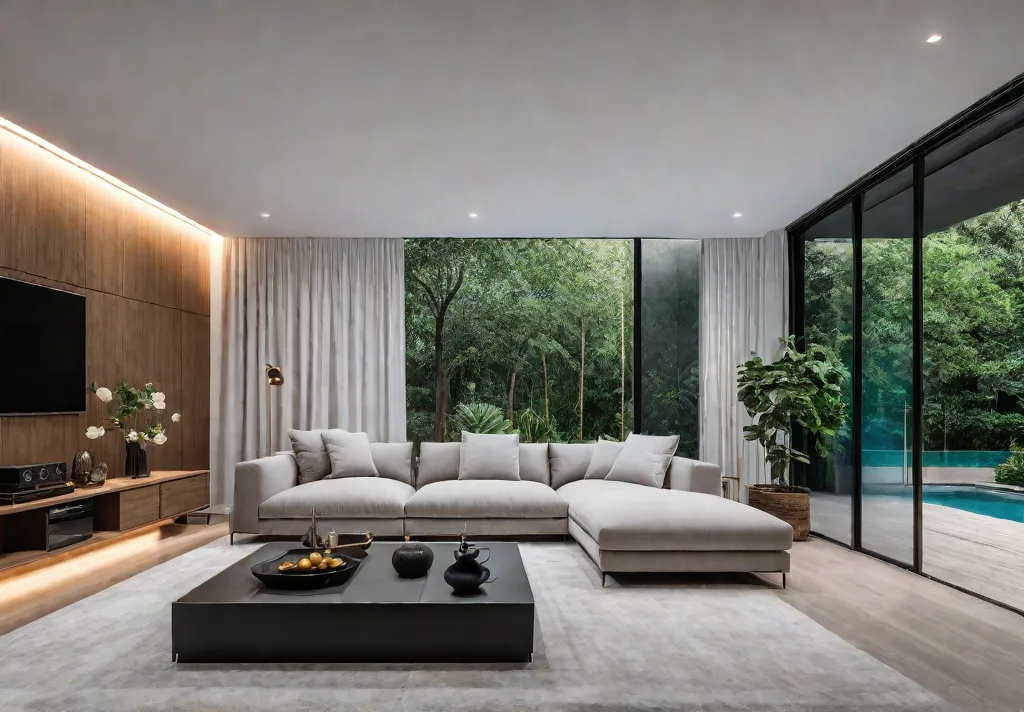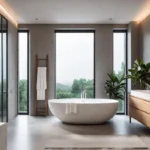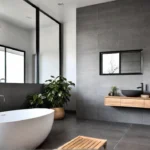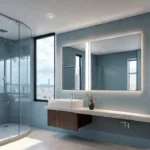Do you ever feel like your living room is completely overwhelmed with stuff? From piles of magazines to an overflowing bookshelf, it’s easy for our personal spaces to become cluttered and chaotic. As someone who’s been there, I know how stressful it can be to walk into a room that feels…messy.
But what if I told you you can transform your living room into a serene, minimalist haven? It’s not as hard as you might think! In this article, we’ll explore seven essential steps to creating a minimalist living room that’s both functional and visually appealing.
I used to struggle with living in small city apartments on a tight budget. But over the years, I’ve learned that you don’t need much stuff to make a space feel cozy and put together. Embracing minimalism can make your living room feel bigger, brighter, and more relaxing.
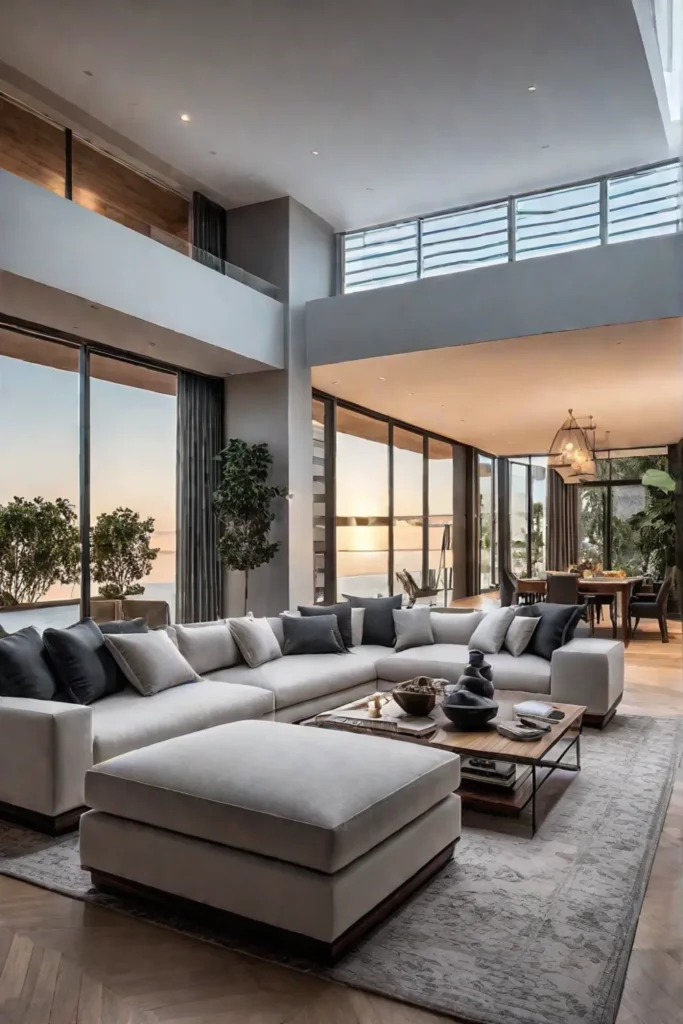
So, whether you’re a seasoned home decor enthusiast or just starting to dip your toes into minimalist living, get ready to declutter your way to a living room you’ll love. Let’s dive in!
Assess Your Space
The first step in creating a minimalist living room is to evaluate the current space’s layout, furniture, and decor to identify areas that need improvement.
Start by walking around the room and paying attention to how it flows. Is the furniture arranged in a way that promotes easy movement and conversation? Or do you feel like you’re constantly navigating around cluttered corners?
Next, take inventory of your furniture and decor. Be honest—have you needed that oversized armchair sitting in the corner for years? Or that stack of magazines you’ve meant to read but never got to? It’s time to identify the unnecessary items contributing to the clutter.
Finally, consider the space’s functionality. Is your living room primarily used for watching TV and relaxing? Or is it more of an entertaining hub where you host guests? Understanding the room’s primary purpose can help you make informed decisions about what stays and what goes.
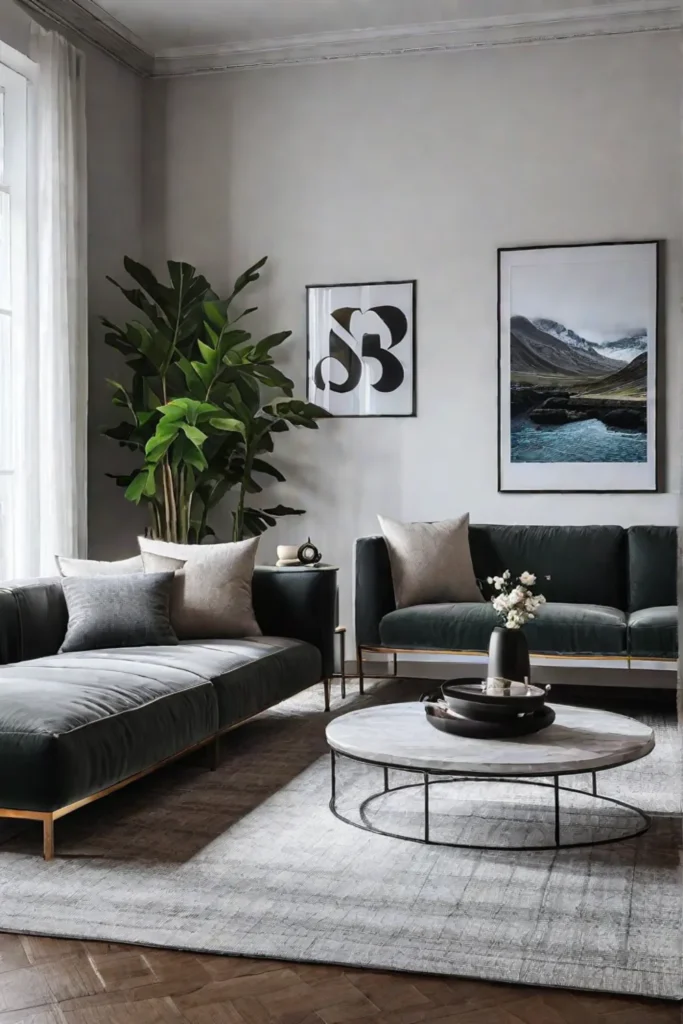
By assessing your living room, you can create a clear plan for achieving that minimalist look you’ve been dreaming of. And trust me, it’s so worth it – a decluttered space can do wonders for your mental health and productivity.
Establish a Minimalist Furniture Arrangement
Now that you’ve taken a hard look at your living room, it’s time to focus on the furniture arrangement. In a minimalist design, the key is to choose and position your furniture to promote functionality and open space.
Start by identifying the essential pieces – a comfortable sofa, a cozy armchair, and a practical coffee table. These will serve as the foundation for your living room seating and storage.
Once you’ve got the basics covered, think about arranging the furniture to create a balanced and cohesive look. Try grouping the sofa and armchair facing each other around the coffee table. This arrangement not only looks visually appealing but also encourages conversation and relaxation.
Another important consideration is incorporating multi-functional furniture pieces. For example, a console table or shelving unit can provide storage and display space while also serving as a functional piece of furniture. This helps maximize the available space and maintain that clutter-free aesthetic.

You’ll notice a few key characteristics of minimalist furniture design. Neutral colors like white, black, and gray are popular choices, creating a clean and uncluttered look. The furniture often features simple, geometric shapes and focuses on functionality over ornamentation.
By carefully selecting and arranging your living room furniture, you can create a sense of openness and flow essential for a minimalist aesthetic. And the best part? You don’t have to sacrifice comfort or style to achieve this look.
Embrace Minimalist Decor
Decor is the icing on the cake when creating a minimalist living room. By carefully selecting and displaying a few key pieces, you can add depth and visual interest to your space without compromising the overall simplicity.
Start by choosing a neutral color palette. Stick to a limited range of colors, like whites, grays, and beiges, to create a calming and cohesive atmosphere. These neutral tones provide a beautiful backdrop for your minimalist decor.
Next, incorporate natural materials and textures. Wood, stone, or ceramics can add warmth and depth to your living room without feeling cluttered. Try a wooden coffee table, a stone vase, or a ceramic planter to bring in those earthy, organic elements.
When it comes to accessories, less is definitely more. Limit the number of decorative items you display and choose pieces that serve a purpose or hold personal meaning. A few well-placed plants, a simple artwork, or a minimalist candle can go a long way in creating a visually appealing space.
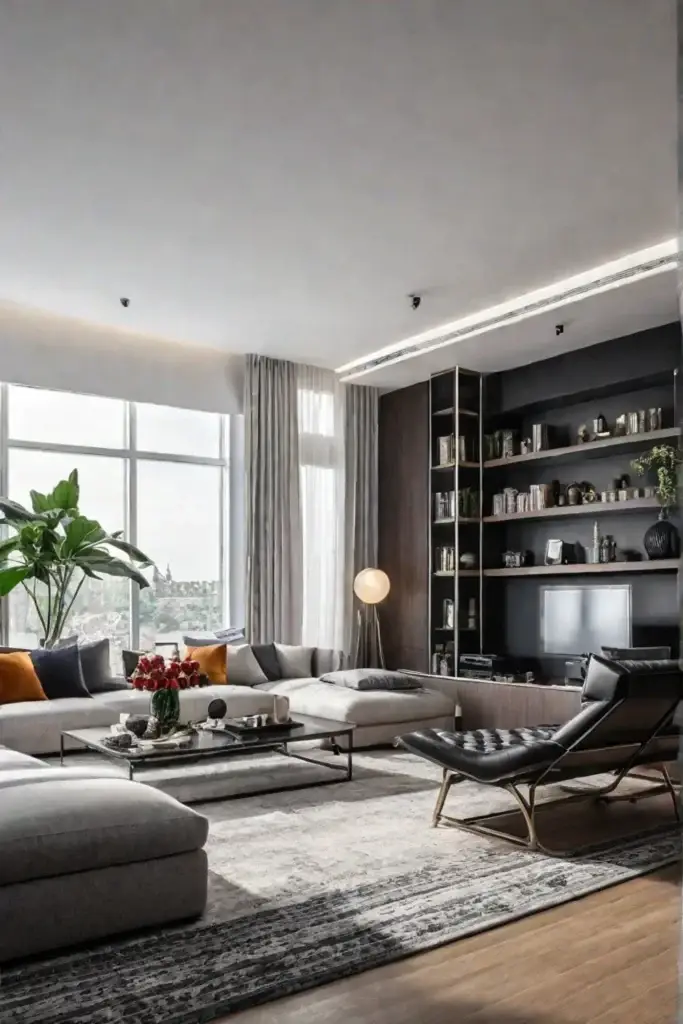
Remember, the key to minimalist decor is to focus on quality over quantity. Invest in a few high-quality, multi-functional pieces that you truly love rather than filling your living room with trinkets and knickknacks.
By embracing a neutral color palette, natural materials, and a pared-down approach to accessories, you can create a living room that feels serene, sophisticated, and effortlessly chic.
Optimize Storage Solutions
Effective storage solutions are essential for maintaining a minimalist living room. After all, what’s the point of decluttering if your space will get cluttered again?
One of the best ways to optimize storage in a minimalist living room is to utilize multi-purpose furniture with built-in storage. Think ottomans or benches with hidden compartments or coffee tables with drawers or shelves. These pieces help keep your living room tidy and organized without sacrificing valuable floor space.
You can also incorporate hidden storage solutions, like wall-mounted shelves or cabinets. These options allow you to keep items out of sight, creating a clean and uncluttered look. And don’t forget about under-bed storage—it’s a great way to stash away seasonal items or extra linens without taking up precious real estate in your living room.

Of course, streamlining your possessions is the most important aspect of maintaining a minimalist living room. Take a hard look at what you’re holding onto and ask yourself, “Do I need this?” If the answer is no, consider donating, selling, or recycling the item. The less stuff you have, the easier it will be to keep your living room organized and clutter-free.
You can ensure that your minimalist living room stays that way by utilizing strategic storage solutions and continuously decluttering. It may take some effort upfront, but the payoff of a serene, uncluttered space is well worth it.
Enhance Lighting
Lighting is a crucial element in creating a minimalist living room. By carefully selecting and positioning your light sources, you can enhance the sense of openness and tranquility in your space.
Start by maximizing natural light. Install large windows or sliding glass doors to let as much daylight in as possible. This makes the room feel brighter and more inviting and helps create a seamless connection between the indoor and outdoor spaces.
When it comes to artificial lighting, opt for clean, minimalist fixtures that complement the overall aesthetic. Avoid anything too ornate or busy, and instead, choose fixtures with simple, geometric shapes and neutral tones. These lights will blend seamlessly into your minimalist living room, creating a cohesive and uncluttered look.

Combine overhead, task, and accent lighting to achieve the perfect lighting balance. Overhead lighting, like recessed fixtures or a minimalist pendant, provides general illumination for the entire room. Task lighting, such as floor lamps or table lamps, can highlight specific areas or activities. Finally, accent lighting, like wall sconces or picture lights, can draw attention to architectural features or artwork.
By carefully considering your lighting choices and placement, you can create a living room that feels bright, airy, and serene – exactly the type of environment you want in a minimalist space.
Incorporate Textiles and Accessories
While minimalism emphasizes simplicity, that doesn’t mean your living room has to be devoid of visual interest. Thoughtfully selected textiles and accessories can add depth and texture to your space without compromising the overall aesthetic.
Regarding textiles, look for natural, high-quality fabrics like linen, wool, or cotton. These materials not only feel luxurious but also complement the minimalist vibe. Incorporate them through throw pillows, blankets, or a statement area rug to anchor the space.
When it comes to accessories, less is more. Stick to a minimal, geometric pattern and limit the number of decorative items you display. A few well-placed pieces, like a ceramic vase or a simple piece of artwork, can add visual interest without making the room feel cluttered.
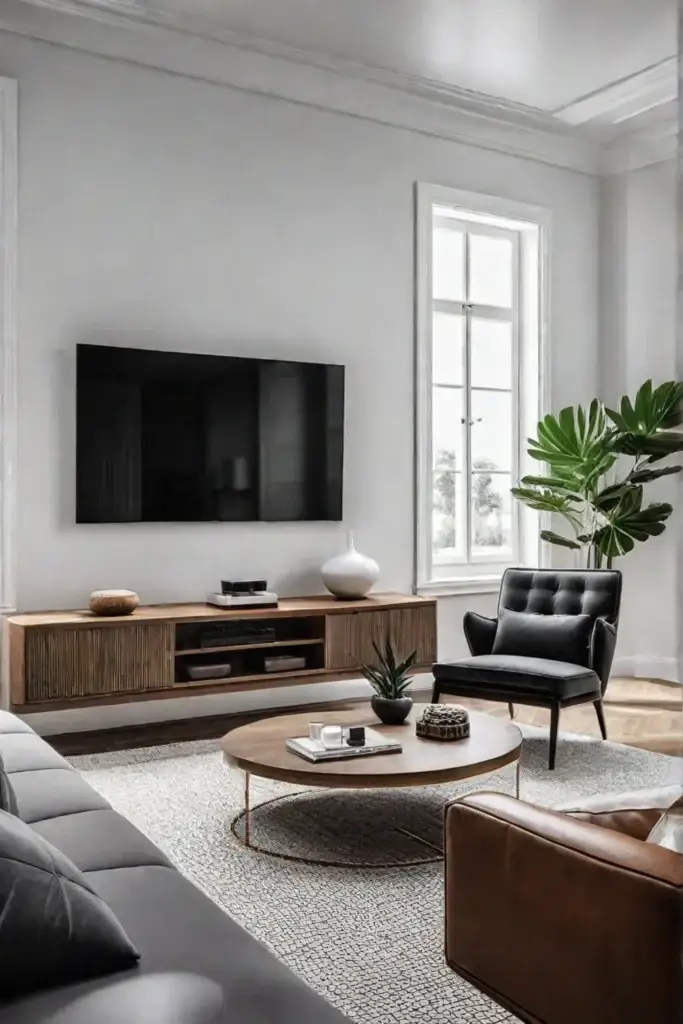
Remember, it’s key to choose items that serve a purpose and align with your minimalist vision. Avoid anything too ornate or busy, and focus on pieces that will enhance the overall aesthetic of your living room.
By thoughtfully incorporating textiles and accessories, you can create a living room that feels warm, inviting, and effortlessly chic – all while maintaining that minimalist vibe you’re going for.
Maintain a Decluttered Environment
Creating a minimalist living room is an ongoing process, not a one-time event. To keep your space looking its best, you must develop habits and routines to maintain a decluttered environment.
Start by regularly reviewing and purging your possessions. Set aside time each month or quarter to go through your living room and remove any items that are no longer needed or used. Donate, sell, or recycle these items to keep them from accumulating and contributing to the overall clutter.
Next, a system for storage and organization should be implemented. Invest in storage solutions that are both functional and aesthetically pleasing, like labeled bins or shelves. This will make keeping your living room tidy easier and ensure that everything has a designated home.
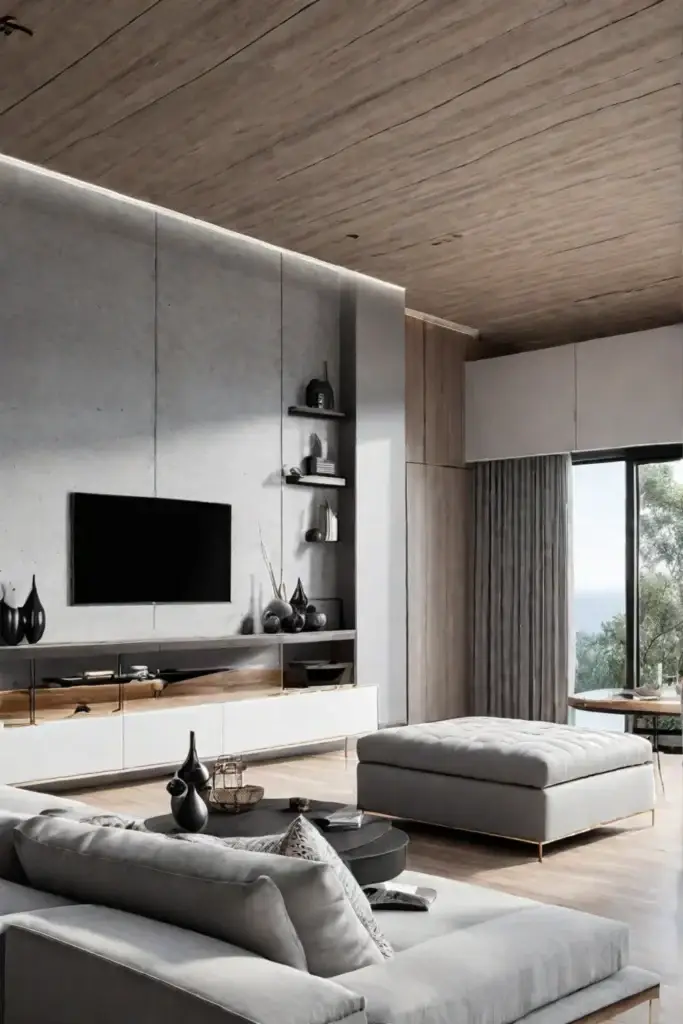
Finally, be mindful of your purchasing habits. Before bringing a new item into your living room, ask yourself if it truly serves a purpose and aligns with your minimalist aesthetic. Being intentional about what you get into your space can prevent clutter from creeping back in.
Maintaining a minimalist living room requires ongoing effort, but the benefits are worth it. A decluttered environment can do wonders for your mental health and productivity, creating a serene oasis amid your busy life.
Conclusion
Creating a minimalist living room is a journey, not a one-time event. But by following these seven essential steps, you can transform your space into a haven of calm and functionality.
Remember, the key to a minimalist living room is to focus on the essentials, embrace simplicity, and maintain a decluttered environment. With dedication and a mindful approach, you can achieve the serene, Instagram-worthy space of your dreams.

So, what are you waiting for? Start assessing your living room, rearranging your furniture, and embracing minimalist decor. Your future self will thank you for taking the time to declutter and create a space that truly reflects your style and values.
Happy minimizing!
